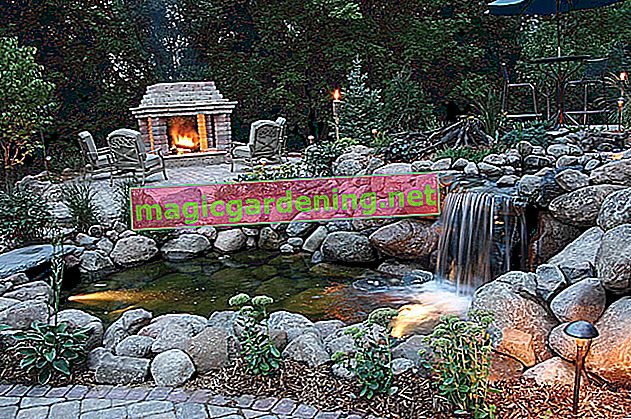
Although such a quiet garden pond has something very special, the splashing of a stream can have an additional charm when it meanders as curvy as possible over the garden property. Here, too, careful planning of the route, taking into account the slope of the terrain, is necessary so that the pond is not "accidentally" pumped empty later by the stream.
also read
- Brief tips for clear water in the garden pond
- Cloudy water in the garden pond? Our tips!
- Build and create a garden pond with a stream yourself
Material for the stream at the ornamental pond
The following materials are required for the construction and subsequent design of the stream bed:
- Pond liner or remnants of it or prefabricated parts for the stream;
- Gravel in grain sizes between 7 and 25 mm, also well suited: Upper Rhine gravel 50 to 125 mm);
- Substructure materials for creating steps or sloping sections (lean concrete, gravel, crushed stone);
- round or oval decorative stones in various sizes and color patterns;
- Grasses ferns and perennials for planting the borders;
- Solvent welding agent for joining the PVC films and a hot air blower;
Prepare the stream bed and slope
After the roughly planned course of the stream has been marked on the site with a stable cord, the number of steps with their respective heights is determined. The optimum for this is 20 to 30 cm, measured at a distance of between one and two meters. Then you can start digging the creek bed to a depth of between 20 and 30 cm.
Where does the water for the garden pond creek come from?
The most skillful and practically invisible way is to get running water into the stream bed with the help of a spiral pump hose. The required (and sufficiently powerful) water pump is placed directly in the pond at a depth of approx. 30 to 50 cm. Now the foil can be laid out and buried with sand at the side edges - preferably similar to a capillary barrier when building a pond, in order to prevent excessive water loss over the entire length of the stream.
Tips
After the course of the brook has been staged in a natural way with pebbles and stones, you can make the whole thing beautiful with attractive plants. Pennywort, dwarf rushes, marsh marigolds and primroses as well as low-growing ferns and grasses are well suited.








